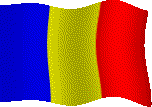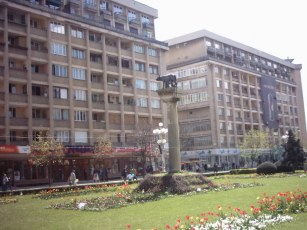Timisoara, Timis County, Romania

A CORDIAL WELCOME TO MY WEB PAGE!
Timisoara GEOGRAPHICAL ELEMENTS Timisoara
ELEMENTS Timisoara
 ELEMENTS Timisoara
ELEMENTS Timisoara At the edge of the Pannonian Plains, there is a city who's life is just as relaxed as dynamic : it is Timisoara, main city of the Banat region. Despite it's nowadays european aims, Timisoara still lives in the shadow of it's european history. Because Timisoara has always been part of Europe.
At the edge of the Pannonian Plains, there is a city who's life is just as relaxed as dynamic : it is Timisoara, main city of the Banat region. Despite it's nowadays european aims, Timisoara still lives in the shadow of it's european history. Because Timisoara has always been part of Europe. Location
Timisoara, the fourth largest city in Romania, has the charm of a small town and the opportunities of a big city. Situated in the western part of the country, Timisoara is the capital of the Timis County, a county bordering Yugoslavia and Hungary. About 330,000 people make their home in the Timisoara area.
Climate
Due to its position Timisoara lays at the upper edge of the sub-Mediterranean zone in a continental intermediate climate area.
The flora and fauna
The vegetation is characteristic to the Banat forest steppe. In Timisoara there are over 100 hectares of parks, with exotic, rare species of secular oaks, plane trees and linden trees with indented leaves.
SHORT HISTORY
It is believed that ancient Dacian and Roman settlements existed in this region, but Timisoara was first mentioned in a document of 1212, the "Diploma" of the Hungarian King Andrew II, and since 1342 it has been referred to as a town.
The city has had a turbulent history, serving as a stronghold in the fight against the Turks, who conquered it in 1552, and ruled over until 1716, when it was conquered by the Austrian armies under the command of Prince Eugen of Savoia.
During the 19th century, Timisoara underwent an important industrial development. It was the second European and the first Romanian city with horse pulled trams in 1867, first European city to introduce electrical street lighting, in 1884. Later that decade, in 1899, electric trams also appeared. Trough continuous progress Timisoara has emerged as a modern industrial city.
Timisoara used to be nicknamed "Little Vienna" due to its similarity to the capital of the empire to which it belonged. Since 1918, after the First World War, Timisoara has been part of Romania.
In 1989 Timisoara was the city that triggered off the revolution against the Ceausescu regime, a revolution that soon spread over the entire country and led to the changing of the political order in the country.
At present, Timisoara, like all of Romania, is implementing the principles of market economy.
ATTRACTIONS

Arts and Culture - Timisoara has some outstanding monuments and buildings. The Ordox Cathedral, The Roman Catholic Dome, The Huniade Castle,the Statue of "St. Nepomuk", the Old Town Hall, The "Bastion", The "Dicasterial" Palace and The Union Square which is truly an architectural masterpiece. The modern buildings we should mention are: The National Bank , The Central Post Office, The Continental Hotel, The Sports Hall, The Bega Trade Center, The Youth's House, BRD Bank and Petrom Building. In terms of culture Timisoara is the only European City that features three state theatres in three languages, the Romanian National Theatre, the German State Theatre and the Hungarian State Theatre. It also has an Opera a symphonic orchestra, a Serbian dance ensemble and a music high school with a modern concert hall. One can also visit the Archaeological Museum and the Museum of Natural Sciences, the Art Museum, The Folk Art Museum, as well as many art galleries.
People - Timisoara is a multicultural city where 28 other nationalities live side by side with the Romanians: Germans, Hungarians, Serbs, Jews, etc. The city is permeated with a spirit of ethnic and religious tolerance (there are 17 different religious persuasions). To meet the needs of this cosmopolitan environment, state pre-academic schools provide education in several languages: Romanian, English, French, German, Hungarian and Serbian. In addition, there are specifically orientated schools, covering technical pre-academic education.
 Recreation - Timisoara features numerous parks and gardens, and therefore it has often been called The City of Flowers. Recreational activities abound in the region. Because of the temperate climate, outdoor activities take place year round. Also facilities for winter sports are available within reachable distances.
Recreation - Timisoara features numerous parks and gardens, and therefore it has often been called The City of Flowers. Recreational activities abound in the region. Because of the temperate climate, outdoor activities take place year round. Also facilities for winter sports are available within reachable distances. Timisoara will ever remain a symbol in the consciousness of the contemporary world as the place where the 1989 Revolution started and as an example of harmonious multi-ethnicity and multi-confessional, where multi-linguistic and multi-cultural character is a natural everyday reality.
So if you are still reading this...
Timisoara is a modern cosmopolitan city with a guiding Motto: Unity in Diversity. We are diverse, but united in accomplishing major ideals: welfare, progress, sympathy and understanding.
Updated:Wednesday, March 17, 2004